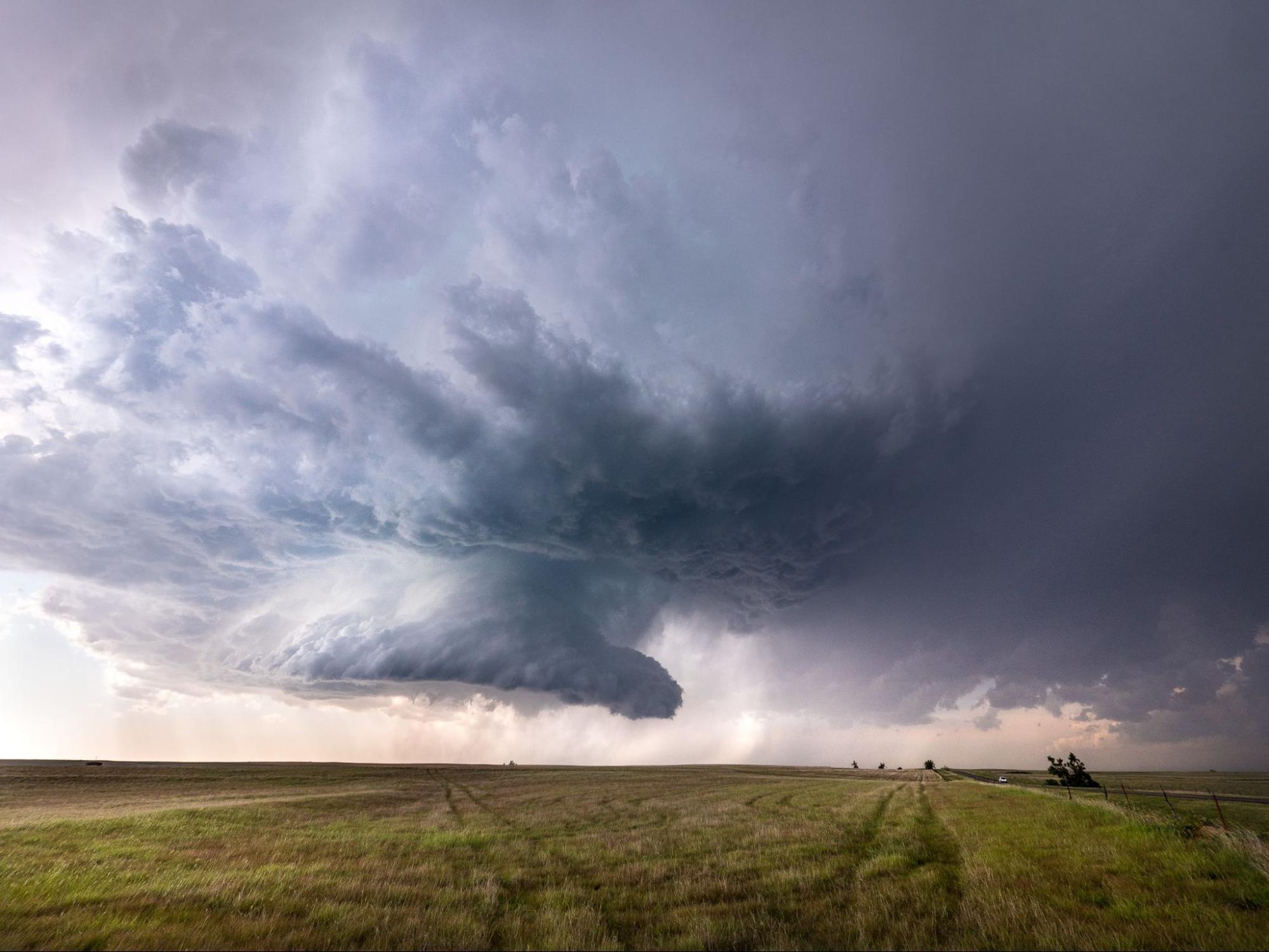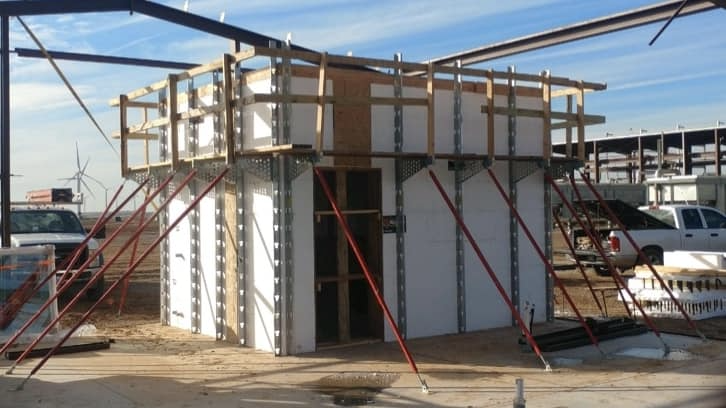
Top Tips for Building a FEMA Approved Storm Shelters

Natural disasters can strike at any time, leaving homeowners vulnerable to the elements. One of the best ways to protect yourself and your family during a storm is by building a FEMA approved storm shelter or safe room. Constructed to resist strong winds as well as airborne objects, these buildings provide protection even in the most violent weather conditions.

Crafting a safe room or tornado shelter compliant with FEMA P-361 and FEMA P-320 would make your house as protected from tornadoes as possible, the maximum safety for all its inhabitants in times of emergency. One suggestion is to build with Insulated Concrete Forms (ICFs) which provide superior strength and durability compared to traditional building materials.
What is a Storm Shelter/Safe Room?
Storm Shelter
A storm shelter is created to protect its occupants from the most destructive weather conditions, such as tornadoes, hurricanes, and thunderstorms. These structures are specifically constructed to endure hurricane-level winds and flying debris which can potentially ravage conventional homes.
Storm shelters can be built above-ground or below-ground level. Above-ground shelters are typically constructed in garages or basements, while below-ground shelters are installed in backyards or other outdoor areas.
Safe Room
A safe room is an incredibly secure, reinforced building that is specifically designed to fulfill the Federal Emergency Management Agency's criteria and provide almost guaranteed safety in events of high winds like tornadoes or hurricanes. 'Almost guaranteed' means that based on our current understanding about these extreme weather conditions, those sheltered inside a FEMA-constructed refuge will be highly likely to avoid death or injury.
Characteristics Required for FEMA Approval of Safe Room and Storm Shelters
To receive FEMA approval, storm shelters must meet the specific design criteria outlined in FEMA P-361: Safe Rooms for Tornadoes and Hurricanes. Some of the key characteristics required for approval include:
Structural Integrity: The shelter must be capable of withstanding wind speeds up to 250 mph.
Protect Against Uplift: A residential safe room requires its foundation to be firmly anchored in order to counterbalance the wind loads on its walls. The anchoring and design of the slab-on-grade must be done as per FEMA P-361, ICC-500 (Section 308.1.1.2). This will ensure that during times of high winds, the structure's foundation can prevent uplift, overturning, and sliding forces from occurring.
Debris Protection: A secure safe room roof should be able to endure the power of a 15-pound 2-inch X 4-inch shot traveling at 67 mph. The walls need to withstand the same projectile at 100 mph.
Ventilation: The shelter must have adequate ventilation to prevent suffocation.
Access: Every structure must provide easy access to one emergency egress point, both from inside and outside the shelter.
Electrical Systems: Electrical systems within the shelter must meet the specific safety requirements outlined in FEMA P-361.
Meeting these requirements may seem daunting, but there are several tips you can follow to ensure your storm shelter meets all necessary criteria.
Tips for Building a FEMA-Approved Storm Shelter
Build with ICFs
One of the most effective ways to build a strong and durable storm shelter is by using Insulated Concrete Forms (ICFs). ICFs are made from expanded polystyrene foam blocks that interlock together like Lego® bricks. Once assembled, the blocks create a solid concrete wall that provides superior strength compared to traditional building materials like wood or steel.

Fox Blocks ICFs offer the required protection in the following areas:
Protection Against Flying Debris
Fox Blocks EPS forms filled with 4" of concrete were able to withstand a 15 pound projectile shot at 104 MPH with zero visible damage to the exterior or interior face of the concrete. The projectile only penetrated the styrofoam.
High Wind Protection
To successfully withstand dangerous winds, constructing a continuous load path is crucial. This pathway will ensure that forces like uplift and lateral loads are directed from the roofing, walls, or other components of the structure to its foundation down into the ground. Having this strong continuous load path in place ensures that all parts of your building stay securely bound together when faced with extreme wind events where gusts can reach speeds as high as 200 mph!
Fire Protection
A Fox Blocks ICF wall with 4" of poured concrete has a 2 hour fire rating. A 6" pour provides a 4 hour rating.
Choose an Appropriate Location
Deciding on the rightful spot for your storm shelter/safe room is a critical step in proper preparation. It should be placed somewhere that's easy to access from both inside and outside of your home, such as an above-ground structure built near an exterior doorway so you can evacuate swiftly if needed. Also, check for underground utilities before you start.
In a new home design, a small room, like a laundry or walk-in closet, could be constructed as a safe room with ICF walls, a concrete ceiling and a hurricane proof door.
Install Impact Resistant Windows/Doors
To meet the FEMA requirements for debris protection, it's essential to install impact-resistant windows/doors on your storm shelter/safe room. These types of windows/doors are designed to resist penetration by wind-borne debris traveling at high speeds.
Impact-resistant windows/doors come in various styles and sizes and can be customized based on your specific needs/preferences. When selecting windows/doors for your shelter/safe room, make sure they meet all of the necessary safety standards outlined in FEMA P-361.
Ensure Proper Ventilation/Electrical Systems
Proper ventilation is critical when designing/building a storm shelter/safe room. Without adequate ventilation systems in place, occupants could suffocate due to lack of oxygen/carbon dioxide buildup inside the structure.
When designing/building your ventilation system(s), make sure it/they meets all necessary safety standards outlined in FEMA P-361. Additionally, ensure all electrical systems within the structure meet specific safety requirements outlined in this publication as well.
Additional Considerations
For building safe rooms which are compliant with the IBC, IRC and FEMA standards, ICC-500 is an industry leader. This referenced standard offers unparalleled security and safety for both builders AND occupants alike.
In 2009, the International Building Code (IBC) and the International Residential Code (IRC) harnessed ICC-500 as their requirement for constructing storm shelters. FEMA also uses the ICC-500 to guide construction of secure rooms and shelters; though they are more stringent than IBC or IRC mandates.
The ICC-500 is the gold standard adopted by FEMA, IBC and IRC for designing and constructing safe rooms. By complying with FEMA guidelines when engineering residential safe rooms, property owners can be assured of top-tier protection from flying debris in storms with high winds like tornadoes.
Fox Blocks Are Engineered for the Utmost Protection in Storm Shelters
When it comes to constructing a FEMA approved storm shelter, Fox Blocks are the ideal solution. Our ICF walls provide unparalleled strength and wind resistance, for seamless integration with other impact-resistant windows and doors. Fox Blocks meet all of the industry standards for storm shelter construction outlined by FEMA, IBC and IRC – to provide the utmost protection from flying debris in extreme weather conditions.
Contact us today for more information! We also have tremendous resources on the website for ICF training and contractor educational ICF courses and videos.